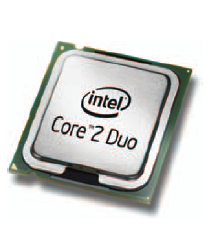Initial steps are performed Adobe Photo Shop Tutorial
1. Hardware and Performance
Lightroom is a cross platform application, meaning that there is one program that can be installed on either a Mac or a Windows platform. For the Mac users, Lightroom is written in Universal Binary, so it can go blazing fast on an Intel-based Mac without the need of Rosetta as well as work on a G4 or G5 The minimum hardware requirements are printed and posted everywhere so rather than wasting space repeating them, I will instead give some recommendations about what equipment will improve Lightroom performance and what won’t.
2. The Need for Speed
Like most image editing applications, getting a faster processor will have a minimal improvement in the speed of operation. For example, on a Windows platform, doubling the processor speed may produce a 20% increase in performance. According to Apple, upgrading from one of the Power PC chips (G4 or G5) to the Intel-Duo chips will double the speed. Will that actually make Lightroom work twice as fast? Probably not since a signifi cant part of Lightroom operation involves disk accesses, and hard drives (even the latest, fastest ones) are a bottleneck. What about dual processing on a Windows platform? Good question, and the only answer I can give you is comparing the performance of a system with an Intel P-4 vs. a similar system with the Intel-Duo.
3. Mac vs. PC
The eternal question was often brought up during 1.1 beta testing most of whom were Mac users. For lots of technical reasons, the Mac has a slight performance edge over Windows (especially if you are using Windows Vista). Mac OS X seems to manage memory better than Windows and the graphics language selected to work with Windows turned out to be less than an optimum choice. Regardless, the diff erence between running Lightroom under OS X and Windows isn’t great enough to warrant further consideration.
4. Video Graphics Cards
The video graphics card, also called graphic accelerator, is a piece of hardware (often quite ex pensive) that seems like it should speed up all of your image editing. Actually, these cards are designed to speed up video games and editing movies. And they do not provide any improvement when used with Lightroom, Photoshop, or Photoshop Elements. I am not saying that you can’t buy some hot graphics card to feed your video game habit and say that it is for improving Lightroom, I am only saying you shouldn’t expect to see any diff erence in performance, with Lightroom. In the fi rst two paragraphs, I have shot down processor speed and graphic cards. You may be wondering if there is anything you can do that makes Lightroom run faster.
Never fear, when it comes to computers there are always ways to spend money and improve performance – like increasing the amount of random access memory (RAM) on the system editing. Actually, these cards are designed to speed up video games and editing movies. And they do not provide any improvement when used with Lightroom, Photoshop, or Photoshop Elements. I am not saying that you can’t buy some hot graphics card to feed your video game habit and say that it is for improving Lightroom, I am only saying you shouldn’t expect to see any diff erence in performance, with Lightroom. In the fi rst two paragraphs, I have shot down processor speed and graphic cards. You may be wondering if there is anything you can do that makes Lightroom run faster. Never fear, when it comes to computers there are always ways to spend money and improve performance – like increasing the amount of random access memory (RAM) on the system










0 comments:
Post a Comment